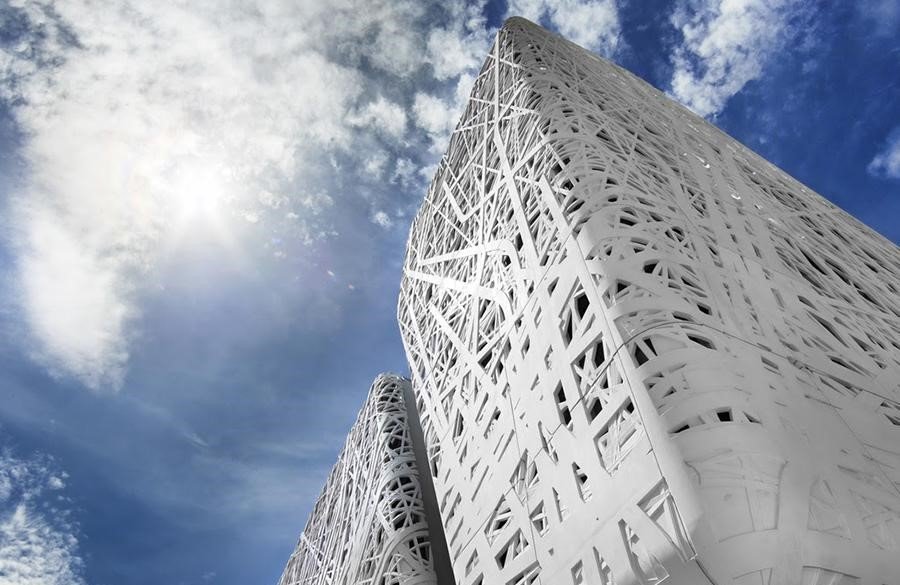For many people, innovation when building a home can be quite daunting. Choosing not-so-well-known materials and using ecological means to make it happen can be a headache to give way to bioclimatic architecture. However, this type of architecture takes into account many factors related to energy efficiency, the climate of the area where we live, saving water and reducing polluting emissions.
Thermal comfort is one of the main characteristics that a bioclimatic house should have. Ecological houses have design and construction guideline that allows tenants to always have a comfortable temperature inside the house that allows them to be as comfortable as possible. This should be of temporary importance. This means that it should not affect the season of the year we are in, we will always have an optimal temperature.
This thermal comfort can be in every house without the need for a bioclimatic construction. However, it generates additional investment costs in heating and cooling systems. These electrical devices consume energy and fossil fuels. So, not only does it generate an extra-economic expense, but it also increases pollution, says a study done by a company that offers rubbish removal in London.
The materials used in bioclimatic architecture are insulators that help avoid those waves of heat or cold that enter the interior of the house. By completely isolating the interior from the exterior, a stable temperature can be achieved both in summer and winter. The ceilings are quite high and have strategically placed vents to clean the indoor air and keep it healthy.
Other materials used are for protection such as pergolas, tents and some sheets of insulating material. All this helps us to have a preserved temperature inside following the comfort we need.
Use of smart materials
One of the biggest innovations in bioclimatic architecture is the use of smart materials. These materials have great benefits over conventional home building materials.
One of the main characteristics of these materials is durability. Unlike conventional materials, these have much higher durability. Thus, we will be able to enjoy good quality materials with fairly high efficiency, for much longer. This leads to huge savings in both maintenance and annual investment in our home.

Another benefit that smart materials have is that they not only insulate us from extreme temperatures in both winter and summer, but they also work as thermoacoustic materials. Cities today are some of the most annoying sources of noise, not only at the psychological level but also at the health level. Numerous scientific studies show that a high percentage of noise in cities and homes consistently ends up causing hearing and psychological problems such as stress and insomnia.
Thanks to the intelligent materials used in bioclimatic architecture, problems of this kind can be avoided. What’s more, they are perfect for controlling humidity and, therefore, the spread of mites and debris that can cause both some types of allergies and other respiratory diseases.
In terms of design, bioclimatic architecture works hard for it. Not only do you have energy-saving materials, but they also look very decorative. Some of these materials have similar qualities to some coverings of natural origin such as wood or marble, although the vast majority of these materials can be customized to your liking.
Advantages of bioclimatic architecture
As expected, a bioclimatic construction has many advantages over a conventional house. The first advantages are self-sufficiency and energy redundancy. That is, to be able to satisfy your energy demand and even generate profits if you have the necessary infrastructure to sell the surplus.
To have a surplus of energy and self-consumption, you need to use renewable energy sources such as wind, solar and geothermal.

Another advantage of these bioclimatic houses is the use of natural resources such as the smart materials mentioned above, sunlight, location and distribution are ideal to reduce electricity consumption, etc. If our house has an internal distribution and a location consistent with the highest number of hours of sunshine per day, we will reduce the use of electricity.
All these aspects add efficiency to these houses to reduce the impact on the environment. The objective of bioclimatic architecture is to save energy and money ecologically, but without reducing the quality of life of the users. On the contrary, we will increase it thanks to the use of optimized materials.
Some concerns
Of course, not everything in this type of architecture can be an advantage. Almost everything in life has some disadvantages behind it. Although if we analyze it one by one, the advantages of this type of housing are more than the disadvantages.
The first and perhaps the most important obstacle is the high price of the investment. The use of smart materials and the location of the house and its distribution efficiently require a high initial investment. Therefore, only people with a larger economic size can afford it. It is possible that in the future this will become known and prices will fall due to greater competition in materials.
Being a novelty today, it is harder to find durable building materials. It has to be in specialized companies for this and they cost much more than conventional construction. For this reason, not only is it more expensive, but it is more difficult to find professionals dedicated to it. It should also be noted that these houses are built for those who want to have a sustainable way of life. If they are useless families, equally the objective pursued by this type of architecture will remain unrealized.